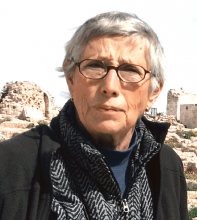You are here
Out of the ghettos
Jul 20,2016 - Last updated at Jul 20,2016
The roots of radicalisation of Afro-Americans and North African Europeans are to be found in ghettos where young people, particularly men, face discrimination, poor schooling, unemployment, and, above all, racism.
Afro-Americans have been enraged by police shootings of mainly unarmed black men.
The crisis began with the death of Michael Brown on August 9, 2014, at the hands of a white police officer. This event exacerbated tensions between the mainly white local police and the populace.
Hundreds of largely black protesters converged on Ferguson, giving a boost to a movement called “Black Lives Matter”, formed following the acquittal of a neighbourhood watchman for the 2012 shooting of a black teenager. Protests, both peaceful and violent, took place over a week in Ferguson and in neighbouring St Louis.
Since then there have been scores of black deaths-by-police violence across the US.
The latest high profile cases took place in Baton Rouge, Louisianna, with the shooting on July 5 of Alton Sterling as he was being held down by two police officers, and near Minneapolis, Minnesota, on July 6 of Philando Castile while he was sitting in his car after being stopped by a cop for a broken taillight.
In response, Micah Johnson, a former soldier who had served in Afghanistan, shot and killed five police officers and wounded seven others and two civilians in Dallas, Texas, on July 7th.
On the 17th of the same month, Gavin Long, who had served in the Marines in Iraq, killed three and wounded three police officers in Baton Rouge.
Both shooters, who claimed to be taking revenge for Sterling and Castile, were killed.
While Johnson did not appear to have been radicalised by any particular group, Long, who blogged as Cosmo Setepenra, had spent time in Egypt, Kenya, Uganda and Ethiopia.
He had been associated with the Nation of Islam, a black power movement, made contact with
a collection of curious organisations and claimed both native US and African ancestry. He cried out for justice for Afro-Americans and others. While the situation of Afro-Americans has been improved by civil rights legislation, greater access to education, and admission of extraordinary individuals to the white-dominated society, most blacks continue to reside in ghettos and are treated as third class citizens. Hispanic-Americans have moved into the second class level.
Similarly, the man who committed the July 14 massacre in Nice, Muhammad Lahouaiej Bouhlel, lived in a deprived ghetto located not far from the Promenade des Anglais, where he slew 84 and wounded more than 200 people on France’s national day.
Like other men who committed killings claimed by Daesh, Bouhlel, a 31 year-old deliveryman born in northern Tunisia, had suffered serious psychological problems and had been
involved in petty crime.
Other North Africans, this time French citizens of Moroccan origin, who carried out the November 2015 attacks in Paris and the March 2016 operations in Brussels had also been ghetto inhabitants living in Brussels where they were involved in petty crime.
Nice has some 40,000 Tunisian residents. Tunisia and Morocco had been French colonies, and Paris encouraged nationals from these countries to settle in France in the 1960s to take up menial jobs in industry and public services.
France promised them and their children they would be treated as French once they spoke the language and adopted the country’s culture.
But France failed to absorb them, leaving them adrift politically and culturally and in ghettos. Unemployment is 40 per cent in the Nice ghetto.
The alienation of Tunisians in both France and Tunisia has led to their recruitment by Daesh. Tunisians account for the largest number of Arab recruits — 5,500 — for Daesh and Al Qaeda’s Jabhat Al Nusra.
Some 8,000 Tunisians have, reportedly, been halted at the border while trying to join takfirist movements.
A survey conducted last year revealed that even after the successful 2011 Arab Spring revolt in Tunisia and the establishment of a more democratic regime, young Tunisians remain economically marginalised and angry.
They mistrust the government and police.
Since 2011, porous borders, particularly between Tunisia and Libya, have enabled youngsters to travel to Syria and allowed weapons to flow into Tunisia.
Daesh and Nusra have set up training camps just across the Libyan frontier. Tunisians have also gone to Algeria where there was a failed fundamentalist uprising during the 1990s. There they have forged connections with Daesh.
US President Barack Obama and French Prime Minister Manuel Valls have called for national unity to face Afro-American and North African French anger and alienation but have not put forward any solutions for the ghetto-isation of these two frustrated communities.
Unless people are moved out of deprived ghettos and given decent livelihoods, increasing numbers of young men and women could react with violence.
Afro-Americans, who have so far focused on domestic woes, could respond to the siren song of Daesh as have North Africans in France and Belgium.
Daesh has claimed the San Bernardino, California, shootings at a community centre by Sayed Rizwan Farook and his wife Tashfeen Malik of 14 people on December 2, 2015, and the massacre of 49 by Omar Mateen on June 12, 2016, at a nightclub in Orlando, Florida.
While Farook and Malik were of Pakistani origin and Mateen of Afghan background, rather than Afro-Americans, they too could become recruits of the militarised cult if their demands are not met.
They want police shootings of blacks to be stopped and prosecutions conducted where warranted.
Daesh can only be balked of its prey by serious action to end gheto-isation which produces alienation, disaffection and anger.













